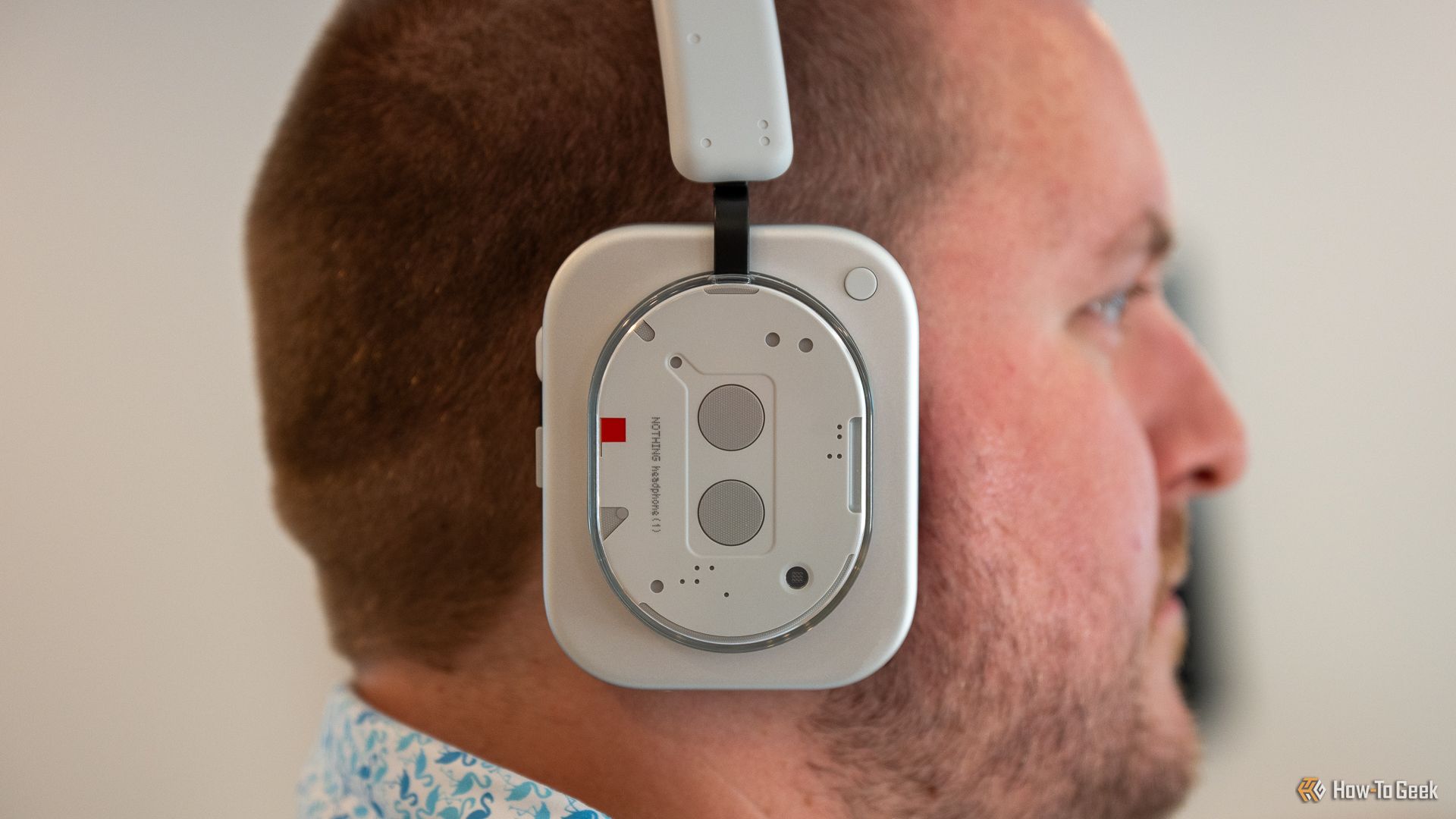After making some of my favorite earbuds over the past four years, Nothing has finally released its first pair of over-ear headphones, the Nothing Headphone (1). After a week of testing, I can confidently say these headphones are more than just a design statement.
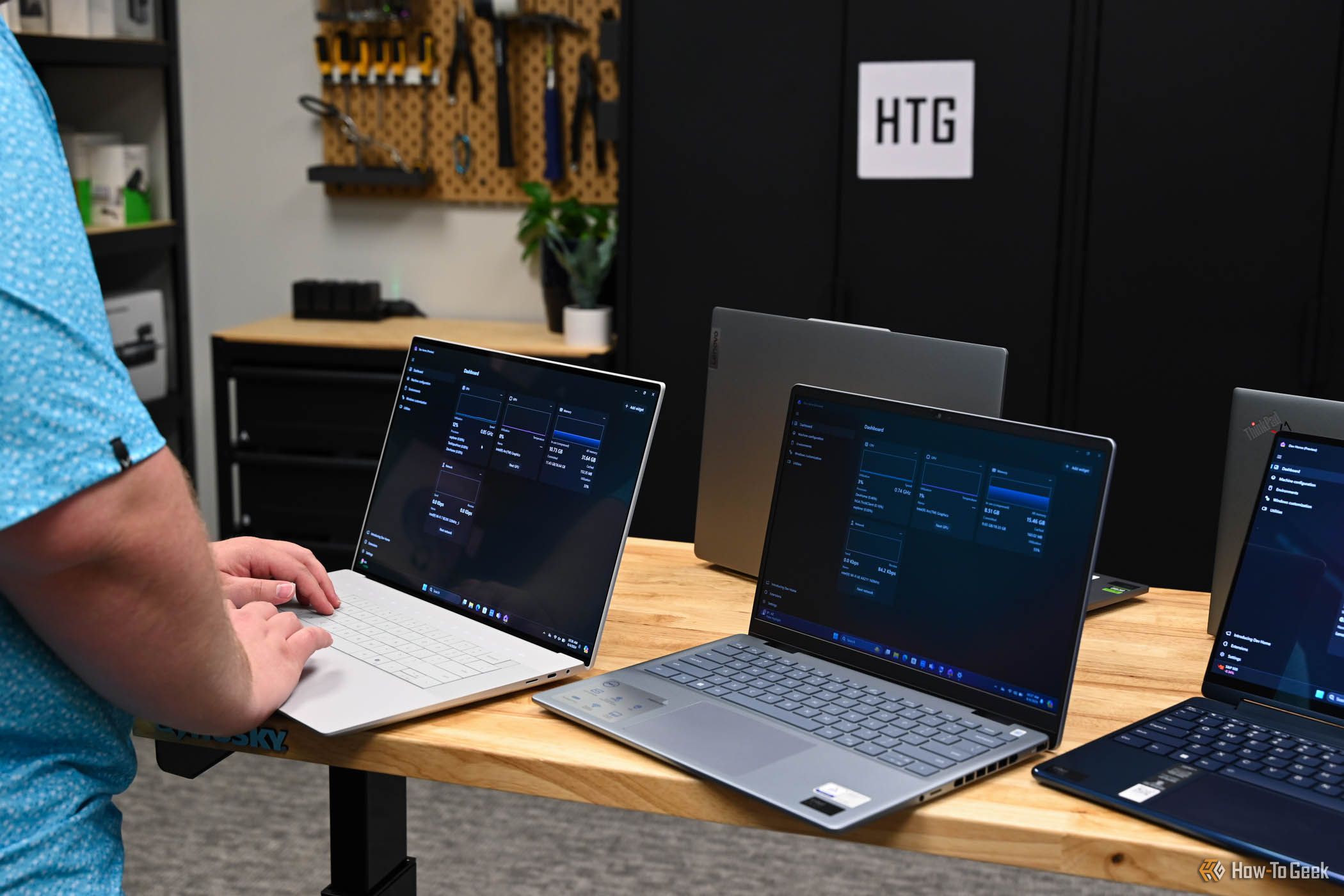
How We Test and Review Products at How-To Geek
We go hands-on with every product to ensure it's worth your time and money.
Price and Availability
The Headphone (1) comes in two colors, Black and White, and is available for pre-order directly from Nothing on July 4, 2025, for $299. They will start shipping later in the month, with general sales open on July 15.
Specifications
- Battery Life
- Up to 80 hours (ANC off), up to 35 hours (ANC on)
- Microphones
- 6 total (4-mic ENC system for calls + dual ANC mics)
- Compatible With
- Android 5.1+, iOS 13+, Nothing OS
- Frequency Response
- 20Hz - 40kHz
- Impedance
- 16 Ω
- Weight
- 329g
- Dimensions
- 173.8 x 78 x 189.2mm
- Noise Cancellation
- Real-time adaptive ANC up to 42 dB (effective to 2 kHz)
- Foldable
- No
- Connectivity
- Bluetooth 5.3, USB-C, 3.5 mm headphone jack
- IP rating
- IP52
- Charging type
- USB-C
- Bit Depth/ Sampling
- 24-bit / 96 kHz (Hi-Res Audio certified)
- Sensors
- Wear detection, spatial audio head tracking
- Driver size
- 40mm
- Supported codecs
- AAC, SBC, LDAC
- Materials
- Formed aluminum, precision-molded plastics, PU memory foam
A Design Uniquely Nothing
If you're familiar with Nothing's smartphones, you'll immediately recognize the company's transparent design on the Headphone (1)'s earcups. You aren't necessarily seeing the internal workings of the headphones, but under the clear plastic, there are small design features, cutouts, and other easter eggs that give these a ton of visual character.
From a distance, the Nothing Headphone (1) gives off a retro-industrial vibe. The round, transparent portion sits on top of a larger aluminum block, and is connected to a thin headband with industrial-looking angled metal. I don't think it's for everyone, but the design has grown on me.
Speaking of the headband, there isn't much in terms of support—but that hasn't really been an issue. The earcups and the top of the band that rests on your head are made out of the same oil-resistant polyurethane. Despite the headphones having a decent amount of clamping force, I found that there was enough cushion to allow for multi-hour listening sessions without discomfort.
My biggest complaint with the Nothing Headphone (1)'s design is that it cannot be folded for compact transportation. Like the last-gen Sony WH-1000XM5, you can only rotate the earcups.
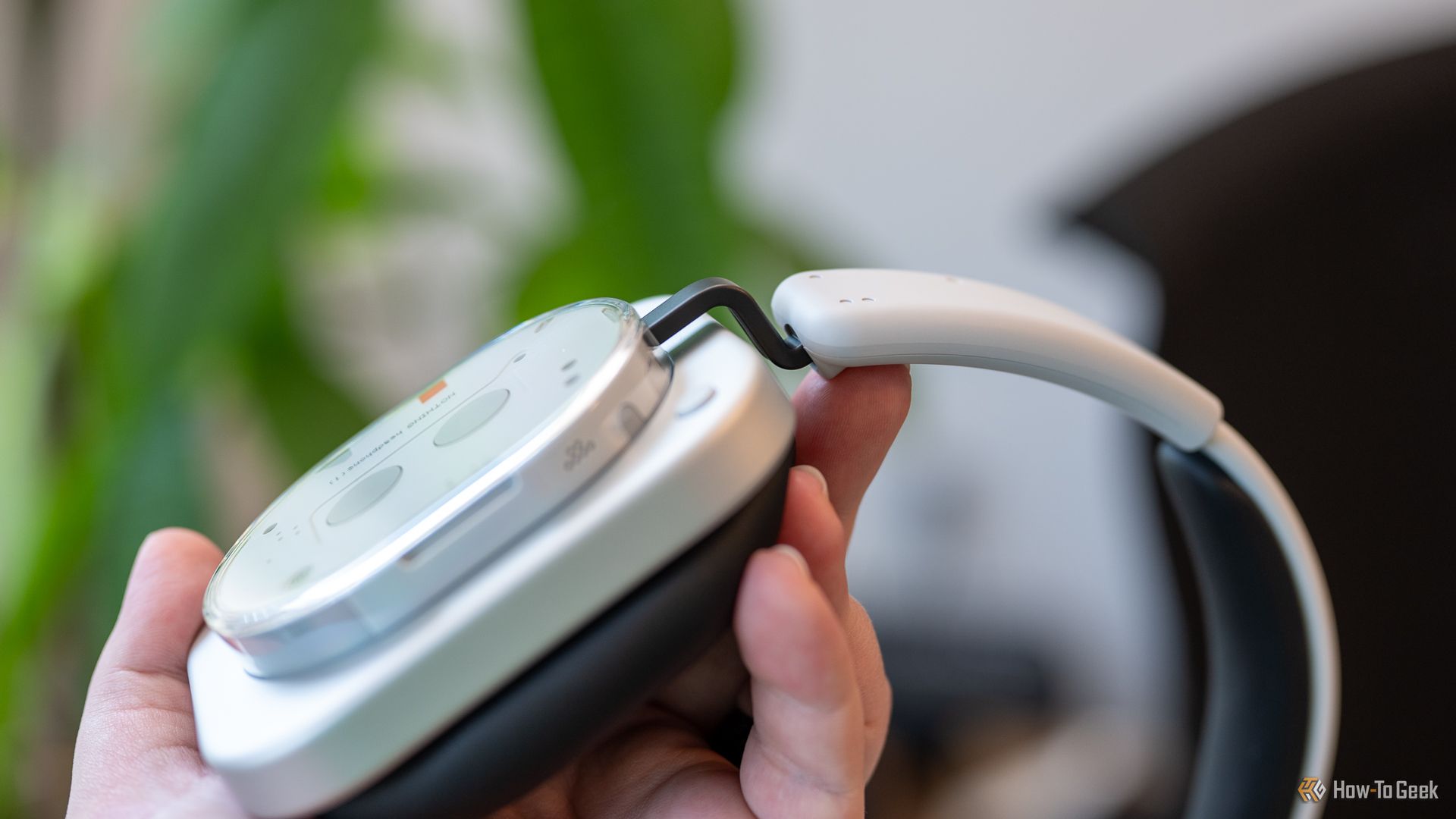
The good news is that the headphones lie super flat. That thinness means they won't take up too much space, even when stored in the included travel case.
The Best Controls on Any Headphones
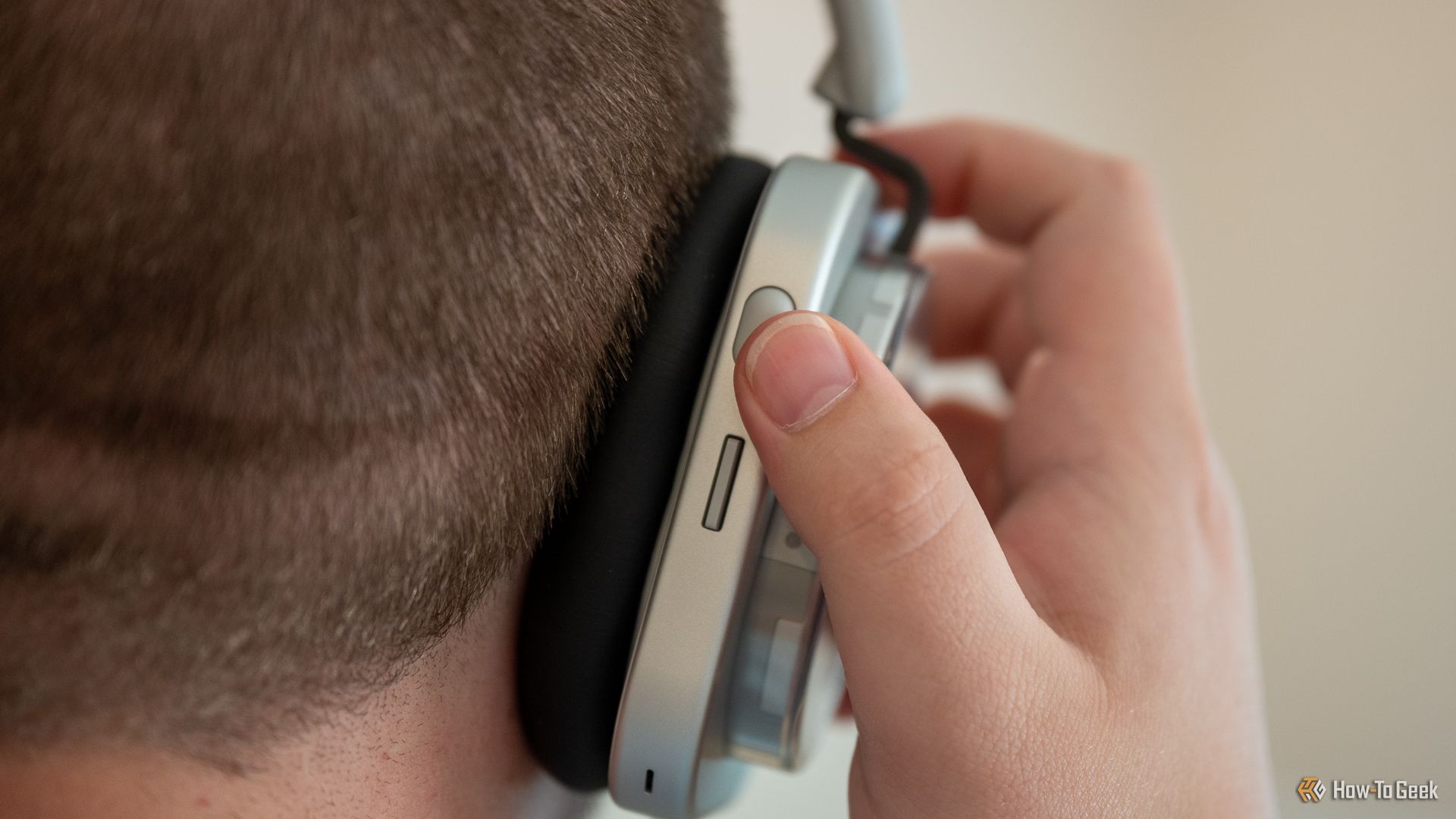
My biggest complaint with most headphones is that they've gone too minimal. So many companies have reduced controls to one or two buttons, requiring you to memorize complex click patterns to do simple things like Bluetooth pairing and skipping to the next track—and don't get me started with swipe and tap controls.
The Nothing Headphone (1) separates these controls in the most user-friendly way I've ever experienced.
On the right earcup, you have a toggle switch for turning the headphones on and off, a roller for smoothly adjusting the volume, a paddle for navigating music, a programmable button that defaults to launching your voice assistant, and a dedicated Bluetooth button for pairing the headphones to new devices.
It's hard to explain just how much I've enjoyed using the buttons and roller on these headphones. They're incredibly simple to use and make me question why others aren't making it easier for customers.
Despite how much I love these controls, I do have a few nitpicks. The first is with the roller. I wish it were actually ratcheted so you could feel the notches as you raise or lower the volume. Instead, an audible chime plays inside the headphones.
Second is the Bluetooth button. Although I now like that it's hidden (it doesn't need to be prominent because you probably won't use it frequently), the first time I went to pair the Nothing Headphone (1) to a second device, it took me forever to find it. I partially blame other headphone makers for training me to long-press a button when turning on the device to enter Bluetooth pairing mode.
Solid Audio Quality With Room to Tweak
I am by no means an audiophile, but I have had the opportunity to test the best consumer-grade headphones available, including the AirPods Max, Sony WH-1000XM6, and Sonos Ace. Comparatively, the Nothing Headphone (1) aren't quite as premium-sounding, but I don't think I would notice a difference if I weren't doing head-to-head testing.
Out of the box, I really enjoyed the headphones' sound profile. Vocals are clear (though could be toned down a bit), the overall sound is warm, and the bass is thumpy. That said, not everyone agreed—others told me they’d tweak the sound slightly.
The good news is that the Nothing X app (available for Android and iPhone) includes a full Equalizer. I personally don't like the default "More Bass," "More Treble," and "Voice" presets, but there is a custom option where you can adjust the mids, bass, and treble, as well as an Advanced mode where you can adjust settings for various frequencies.
You can also access "Bass Enhancement" and spatial audio features within the Nothing X app. To put it bluntly, enabling either or both of these settings made the Headphone (1) sound noticeably worse.
The default audio preset is already a little bass-heavy, so turning it up by up to 5 levels is not necessary. And while spatial audio can be fun, it sounded way too artificial to my ears. When enabled, songs have this warped sound as if being stretched to move certain instruments and vocals to other locations around you.
What I'm most happy about is the ANC and Transparency mode performance. I wore the Nothing Headphone (1) on an eight-hour flight to London and could tune out every noise around me. It was beautiful.
The Transparency mode quality is also near flagship. AirPods Max still wear the crown, but besides a slight hiss, audio passthrough is extremely clear. I had no difficulty understanding others and conversing with my spouse while wearing the headphones.
Disappointingly, the microphone performance doesn't necessarily excel while on phone calls or in meetings. As you can hear below, my voice sounds a bit tiny and muddy.
I wouldn't say the mic quality is bad—someone on the other end will definitely know you're wearing headphones—but I was expecting better after experiencing the impressive ANC and Transparency mode.
Should You Buy the Nothing Headphone (1)?
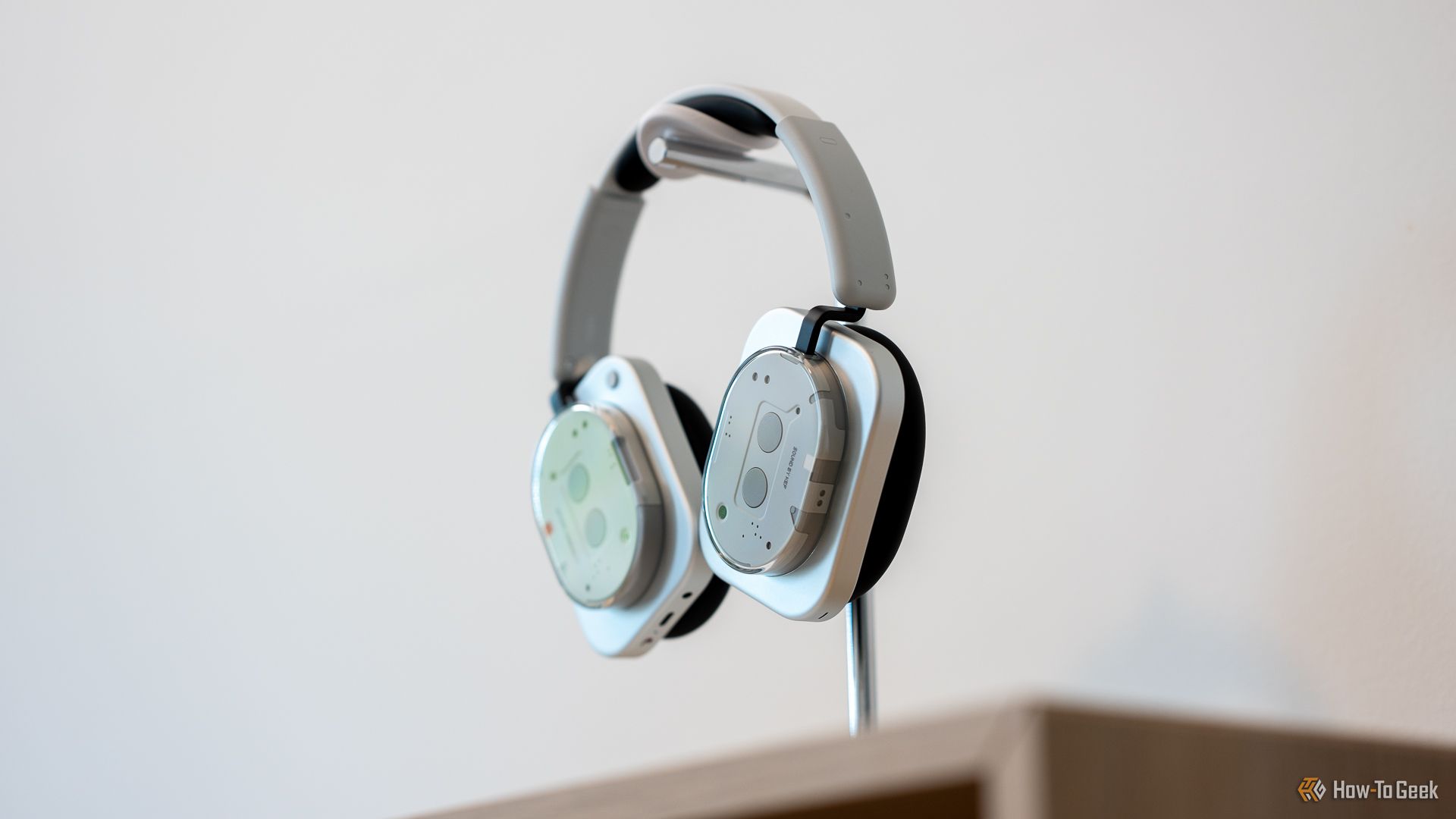
At $299, the Nothing Headphone (1) aren't cheap, but they are cheaper than the over-ear options you are probably considering. Compared to the AirPods Max, Sony WH-1000XM6, and Sonos Ace, these are at least $150 cheaper, and the audio quality, ANC, and Transparency mode are almost on par.
Ultimately, the physical controls are what won me over. Instead of having to memorize what single-, double-, triple-, and long-pressing each button does, you're met with a simple power switch, an intuitive paddle and roller for navigating tracks and adjusting volume, and a customizable button you can set to anything.

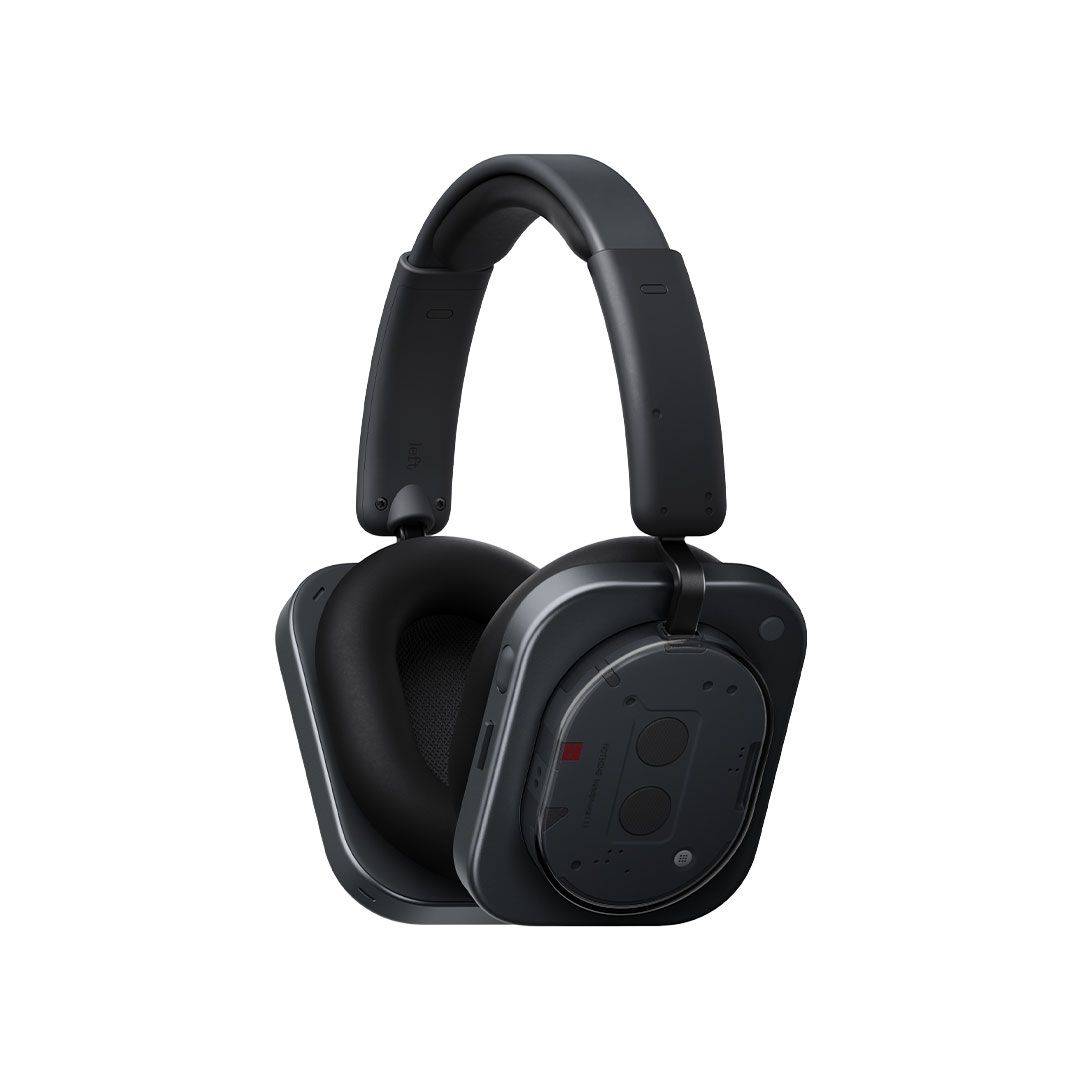
Nothing Headphone (1)
- Battery Life
- Up to 80 hours (ANC off), up to 35 hours (ANC on)
- Microphones
- 6 total (4-mic ENC system for calls + dual ANC mics)
- Compatible With
- Android 5.1+, iOS 13+, Nothing OS
- Frequency Response
- 20Hz - 40kHz
Nothing Headphone (1) is an over-ear headphone with a transparent design and custom-tuned audio developed in collaboration with KEF. It features physical controls, adaptive noise cancellation, and up to 80 hours of battery life.


